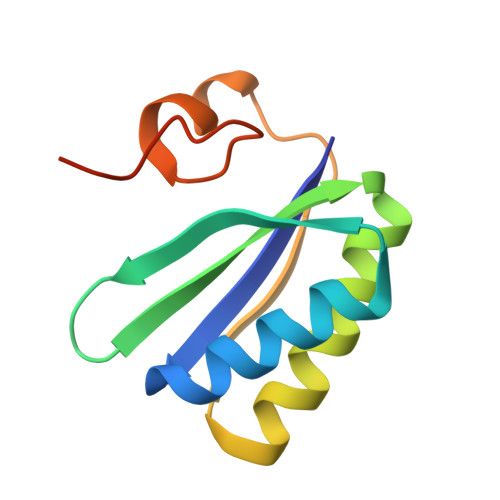Crystallographic insights into the pore structures and mechanisms of the EutL and EutM shell proteins of the ethanolamine-utilizing microcompartment of Escherichia coli.
Takenoya, M., Nikolakakis, K., Sagermann, M.(2010) J Bacteriol 192: 6056-6063
- PubMed: 20851901
- DOI: https://doi.org/10.1128/JB.00652-10
- Primary Citation of Related Structures:
3MPV, 3MPW, 3MPY - PubMed Abstract:
The ethanolamine-utilizing bacterial microcompartment (Eut-BMC) of Escherichia coli is a polyhedral organelle that harbors specific enzymes for the catabolic degradation of ethanolamine. The compartment is composed of a proteinaceous shell structure that maintains a highly specialized environment for the biochemical reactions inside. Recent structural investigations have revealed hexagonal assemblies of shell proteins that form a tightly packed two-dimensional lattice that is likely to function as a selectively permeable protein membrane, wherein small channels are thought to permit controlled exchange of specific solutes. Here, we show with two nonisomorphous crystal structures that EutM also forms a two-dimensional protein membrane. As its architecture is highly similar to the membrane structure of EutL, it is likely that the structure represents a physiologically relevant form. Thus far, of all Eut proteins, only EutM and EutL have been shown to form such proteinaceous membranes. Despite their similar architectures, however, both proteins exhibit dramatically different pore structures. In contrast to EutL, the pore of EutM appears to be positively charged, indicating specificity for different solutes. Furthermore, we also show that the central pore structure of the EutL shell protein can be triggered to open specifically upon exposure to zinc ions, suggesting a specific gating mechanism.
- Department of Biotechnology and Life Science, Tokyo University of Agriculture & Technology, Tokyo, Japan.
Organizational Affiliation:

















